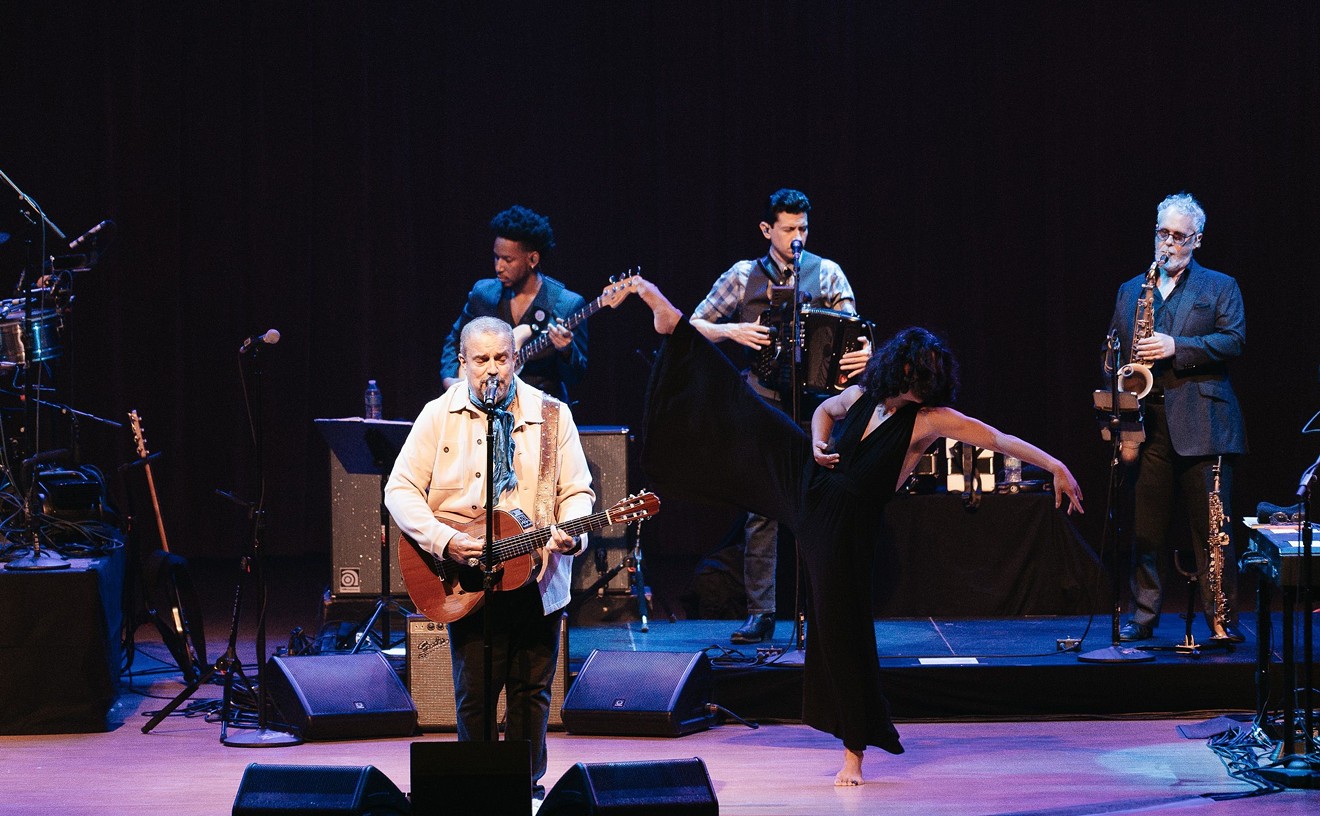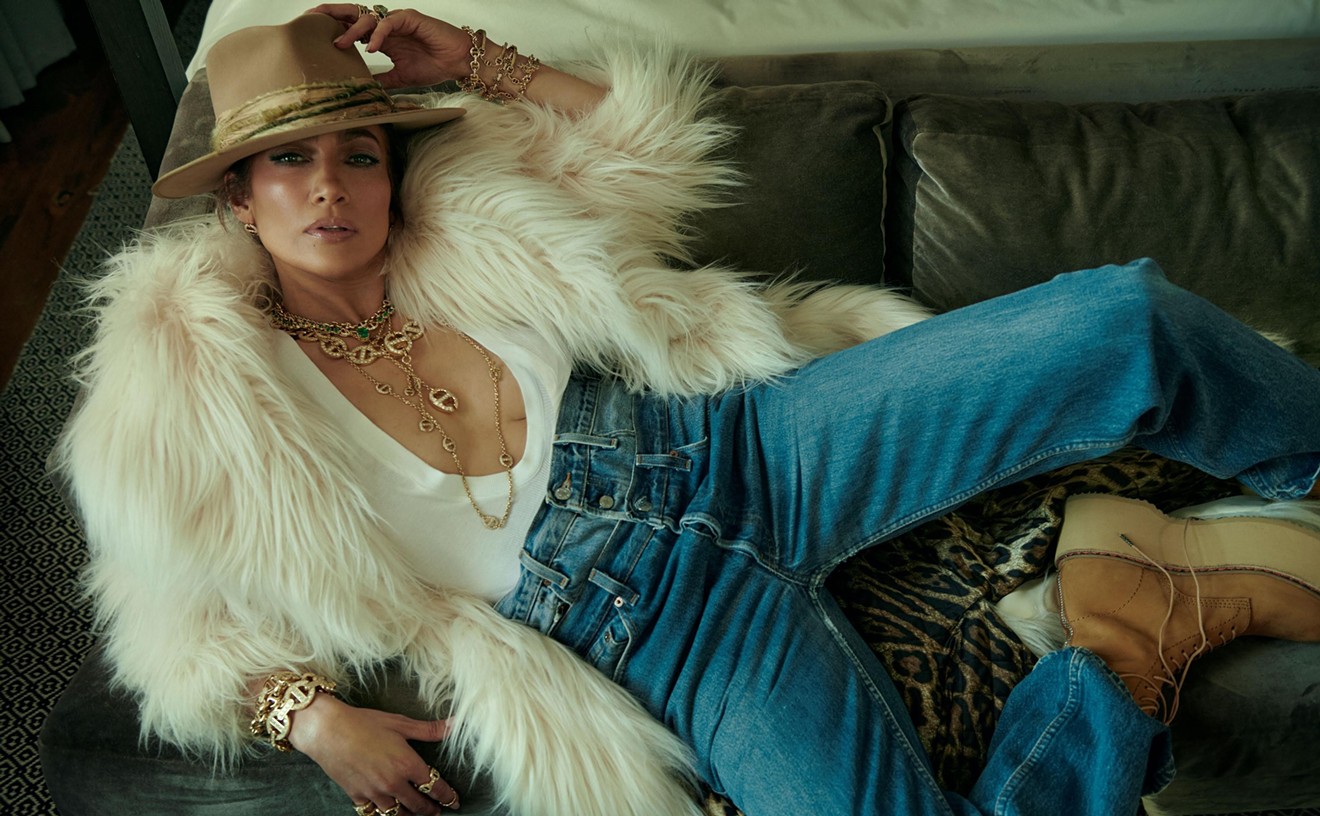Throughout the '70s and '80s, and even well into the '90s, the local recording scene -- bolstered by North Miami's Criteria Studios in particular -- produced some of the most memorable albums of the past 40 years. Here's a sampling of some of the great albums to South Florida can claim credit. So, as long as we remember great rock 'n' roll, someone out there can use this article to establish South Florida's connection to it.
10. Hotel California -- The Eagles
The Eagles' fifth album, released in 1976, and the first to feature guitarist Joe Walsh, yielded a pair of number one hits in both the title track and "New Kid In Town," with a third song, "Life in the Fast Lane," barely missing the top ten.
As a result, the album itself became one of the best selling recordings of all time, after being anchored at number one for eight weeks, and racking up sales of 16 million copies in the US alone. It's said that when the band was recording at Criteria, they found themselves assigned a studio adjacent to Black Sabbath, who were in the midst of making their record Technical Ecstasy. Rumor has it that Sabbath was so loud, the sound bled through the walls and the Eagles had to briefly stop their session.
9. Time Out Of Mind -- Bob Dylan
The first in a trilogy of albums that helped revive the Bobster's career, Time Out of Mind was written mostly in Minnesota, and subsequently recorded at Criteria under the supervision of producer Daniel Lanois, the man with whom Dylan had worked previously on his 1989 effort Oh Mercy.
Ironically, years after its 1997 release, Dylan complained of not liking the sound, even though its gloomy atmospheric ambiance is an important part of its presence. Lanois too had his druthers, telling one interviewer, "Well, you just never know what you're going to get. He's an eccentric man." Accordingly, many of their strategy sessions were held out in the studio's parking lot, where the two men would huddle away from the other musicians. Nevertheless, the album yielded several late period Dylan classics, among them, "Not Dark Yet," "Cold Irons Bound," and "Make You Feel My Love," as well as three Grammy awards, including Album of the Year.
Highway to Hell -- AC/DC
The final album recorded with original singer Bon Scott, Highway to Hell spawned the indelible title track and became the first AC/DC album to break into the American top twenty. It was a career-maker for the band, and marked their first collaboration with producer Robert John "Mutt" Lange, the man who would help steer them to further success later on.
Although sessions began in their native Australia, much of the album was recorded at Criteria, followed by subsequent work at Roundhouse Studios in London. The band's final release of the '70s, it was unveiled on August 3, 1979, and subsequently became one of the successful hard rock LPs of all time.
461 Ocean Boulevard -- Eric Clapton
Clapton's second solo album was an auspicious venture for a number of reasons. For one thing, it was recorded in the immediate aftermath of his heroin addiction. For another, it came on the heels of his efforts as part of Derek and the Dominoes, a fortuitous endeavor that, in many ways, made this album possible.
The Dominos' bassist Carl Radle took the initiative to hand Clapton a demo tape containing songs written by him and other members of Criteria Records' studio band, and even went so far as to pay Clapton's rent at 461 Ocean Boulevard in Golden Beach. The namesake album that was released in 1974 paid huge dividends and contained the cover of Bob Marley's "I Shot the Sheriff," which eventually reached number one on the Billboard Hot 100, the only Clapton single ever to climb that far.
Layla and Other Assorted Love Songs -- Derek and the Dominos
The sole studio offering from Eric Clapton's "new band," all of whom the guitarist had whisked away from the ad hoc combo Bonnie and Delaney and Friends, it set such a high bar, the group never attempted a follow-up.
While Clapton is credited for steering the group through its paces, in truth, it was a collaborative effort, one that featured not only the input of the other Dominos -- keyboardist/vocalist Bobby Whitlock, drummer Jim Gordon, and bassist Carl Radle -- but also shared the spotlight with guest guitarist Duane Allman.
Produced by the legendary Tom Dowd, it boasted a title tune that would become an indelible part of Clapton's canon. Ironically, Clapton opted to use the Derek nom de plume, so as not to let his celebrity detract from the group's unified image. Released at the tail end of 1970, the album made its way into the top twenty, but also charted again repeatedly over the ensuing years, in 1972, 1974, and in 1977. Expanded with bonus tracks, it also belatedly entered the charts in the U.K, in 2011, peaking at a modest number 68.
Eat a Peach -- The Allman Brothers
Released in February 1972, Eat a Peach helped solidify the Allman Brothers' steadily growing reputation which had already accelerated rapidly with their live double album At the Fillmore the year before. Sadly, it was the last album to feature founder Duane Allman, who died in a motorcycle accident during the record's recording. Consequently, Duane's contributions were limited to only three songs.
Still, Allman is given credit for the album's obtuse title. Asked in an interview what he was doing to further the cause of the youthful rebellion that was raging at the time, he replied. "There ain't no revolution, it's evolution, but every time I'm in Georgia I eat a peach for peace." The original title was intended to be "The Kind We Grow in Dixie," but given the band's dissatisfaction for the name and the fact that a peach was always intended to appear on the cover, it was retitled accordingly.
Street Survivors -- Lynyrd Skynyrd
The fifth studio album by Lynyrd Skynyrd, Street Survivors was also the last to feature original members Ronnie Van Zandt and Allen Collins as well as recent recruit Steve Gaines. Sadly, the three musicians, along with back-up singer Cassie Gaines, were killed in a chartered plan crash three days after the album's release on October 17, 1977.
Perhaps helped by the tragic circumstances, the album immediately secured gold status, and later went on to attain double platinum certification. Two of its songs -- "What's Your Name" and "That Smell" -- have also become an integral part of the band's set list ever since.
Ironically, the album was recorded twice, first at Criteria and then at Studio One in Doraville, Georgia. However, it's the alternate album covers which initially attracted controversy. The original pressing featured a photo of the band standing in flames, but after the accident transpired, an alternate picture of the group posing before a black background was substituted. The current version of the album features the original cover and still stands as a tragic epitaph to a band that was only just beginning to hit its prime.
Saturday Night Fever -- the Bee Gees
Both critically acclaimed and widely derided for helping to spur the growth of disco, the soundtrack to Saturday Night Fever marked a major stepping stone in the career of the Bee Gees, who wrote and performed most of its tracks, and of the music industry in general.
Barry Gibb's pinched falsetto became the single most identifying characteristic of the band thereafter, but it was the songs on the album -- "If I Can't Have You," "Jive Talking," "More Than A Woman," "Stayin' Alive," "Night Fever," and "You Should Be Dancin'," -- which changed the Gibb Brothers' fortunes forever and permanently endeared them to disco devotees throughout the '70s and the '80s. In addition to garnering a Grammy for Album of the Year, it was also the best selling soundtrack of all time for some time, a distinction it held until it was usurped by The Bodyguard.
Monster -- REM
Ranked among the band's most pivotal albums, REM chose Criteria as the third stop in its attempts to complete the album, following earlier sessions in New Orleans and Atlanta, and prior to later work in Los Angeles. Upon it s release in September 1994, it instantly debuted at number one, even though its distorted sound confounded some longtime fans.
Not surprisingly, Monster received rave reviews from the critics, although guitarist Peter Buck felt obliged to offer his own impression. He described it as a "rock" record, putting the word rock in quotations. "That's not what we started out to make, but that's certainly how it turned out to be," he suggested. "There's a nudge, nudge, wink, wink feel to the whole record."
McGuinn, Clark and Hillman -- Roger McGuinn, Gene Clark and Chris Hillman Although it doesn't rank up here among the aforementioned masterpieces, this reunion of three crucial members of the Byrds is still worthy of a mention.
Containing a moderate hit in the reggae-tinged song "Don't You Write Her Off," it was most notable for reconstructing the classic harmonies McGuinn, Clark, and Hillman perfected early on. Yours truly had opportunity to visit the band during its South Florida tenure, and when asked to hear some of the early takes, Hillman repelled the suggestion, insisting it wasn't a good precedent to let a record company representative take a sneak peek.
Follow @CountyGrind










